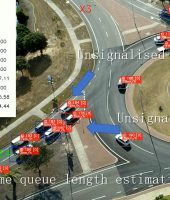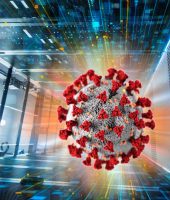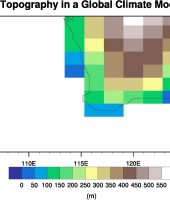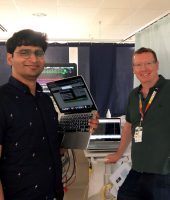Simulating atoms for green energy
Australia needs cheap renewable energy to combat climate change. Pawsey works with a chemical sciences team at Griffith University to make this a reality. In 2020, an estimated 24 per cent of Australia’s total electricity generation came from renewables and each state is moving to make this the main energy source before 2050. A changing energy industry needs new materials to keep power prices low. Dr Yun Wang’s team is probing how atoms behave when absorbing energy to find these new materials.
The Challenge
Yun models how green materials work at an atomic level. Mathematical models show how atoms change their behaviour when they receive energy. How well atoms can absorb energy changes solar cell efficiency and hydrogen production, two of Australia’s biggest future industries.
One of the most promising solar cell technologies available on the market is quantum dots. These are particles over 1000 times smaller than the width of a human fingernail. Quantum dots absorb more sunlight than any other material. Yun wanted to understand how this material behaved to improve it.
“Quantum dot materials are promising solar performers. We collaborated with groups at the University of Queensland. They were synthesising these quantum dots and wanted us to model how they worked at an atomic level. This would improve the molecular designs of these dots,” says Yun.
Atoms and energy behave by quantum mechanical laws. This means dealing with large amounts of probabilities, variables, and uncertainty. Even a high-powered laboratory computer would struggle to simulate this well enough to find new materials. To overcome this challenge, Yun used Pawsey’s Magnus supercomputer.
The Solution
The team partnered with Pawsey, using the Magnus supercomputer for their quantum simulations. They were able to narrow down their research to a handful of specific green materials, based on their efficiency and cost.
“We used over one million core hours through Pawsey. We could create oversimplified models to study this mechanism with our own resources, but only a supercomputer can give us a more realistic model. So Pawsey was vital for exploring these mechanisms,” says Yun.
The energy mechanics Yun modelled for quantum dots was also applied to different green energy materials. This included finding cheaper versions of the rare metals needed for hydrogen production.
“Atomic modelling is time-consuming. We need a supercomputer to help us solve the Schrodinger equation. This equation is central to the quantum behaviour of atoms and helps us find better green materials.”
The Outcome
Yun’s team discovered the power conversion of quantum dots in solar cells. They found quantum dot power efficiency was 16.6 per cent. This proves they’re the best sunlight harvesters in the solar cell industry. The team are now testing cheaper alternatives. Yun was also able to model replacements for expensive platinum in hydrogen production.
Platinum speeds up hydrogen gas production, saving time and energy. But platinum is expensive at nearly $1300 an ounce. Nickel within an organic molecular framework could become the future of cheap hydrogen fuel. This will help Australia meet its National Hydrogen Strategy to become one of the top hydrogen producers in Asia by 2030.
“It’s difficult to synthesise these kinds of precise materials. Our future research considers how solvents and different catalytic conditions affect energy conversion efficiency. This will be a more complicated model, so we’ll continue to need supercomputing resources,” says Yun.
“If we want to develop new green energy, we need to find cheap materials with better performance.”
Yun’s research is contributing to Australia’s clean energy future. Thousands of cheaper, more powerful quantum dots will line the surface of solar cells. Meanwhile, Australia’s hydrogen industry will move from platinum to cheaper metals like nickel. Materials research has the power to transform Australia’s energy industry. High-performance computing is vital for these material explorations. Better green materials will help create a safer, more sustainable world.
Project Leader.






